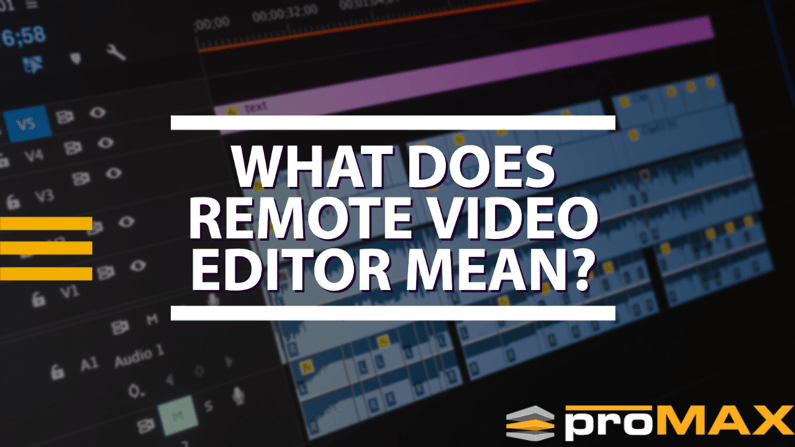Introduction
Video editing has become one of the most sought-after job opportunities in the recent past, thanks to the growing demand for visually rich content. With businesses and individuals relying heavily on engaging visuals to grab the attention of their target audience, it's no surprise that the video editing industry has experienced significant growth. Along with this growth comes a new trend in video editing that's taking the industry by storm: remote video editing. But what exactly does remote video editing mean, and how is it changing the future of video editing? This blog post will explore everything you need about remote video editing.
What is Remote Video Editing?
Remote video editing refers to the process of editing video footage from a remote location without being physically present at the place of filming. In other words, a remote video editor can work from anywhere in the world and collaborate with videographers and directors worldwide. This allows for a higher level of flexibility and convenience that traditional video editing methods don't provide.
One of the main advantages of remote video editing is the ability to work with a team of professionals in different parts of the world. This means that businesses can source talented video editors from different countries, which can be a cost-effective way to create high-quality video content. In addition, remote video editing eliminates the need for travel expenses and allows for a faster turnaround time, which is critical when working on time-sensitive projects.
Another advantage of remote video editing is the ability to work with multiple clients and projects at once. Since video editors are not tied down to a physical workplace, they can manage their time and take on more projects, which means more income. This also allows for a more diverse portfolio, which can attract more clients and bigger projects.
While remote video editing has many upsides, it's worth noting that it also has its challenges. Communication can be a struggle when working with a remote team, especially if time zones come into play. It's important for remote video editing teams to work out a clear communication strategy and set up regular meetings to ensure everyone is on the same page. Additionally, remote video editors need to be self-motivated, organized, and able to work independently since they don't have the same level of supervision as they would in a traditional office setting.
Conclusion
The future of video editing is turning towards remote work, as it allows for more flexibility and cost-efficiency. While remote video editing has a few challenges, it's continuously adapting to meet the demands of today's fast-paced work environment. As a video editor, embracing remote work can open up new opportunities and help you break into the industry without the added pressure of relocation. It's clear that remote video editing is here to stay, and the industry is changing to accommodate this new trend. So, are you ready to join the remote video editing revolution?
If you are working with a team and want to upgrade your remote video editing software, check out our blog Remote Video Editing Software for Remote Video Editors.


